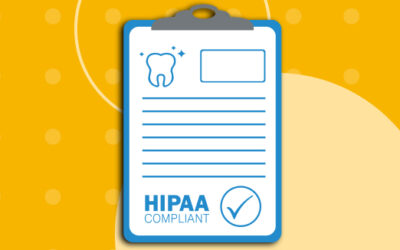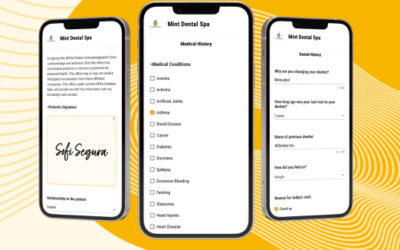
Knowing what to include on a consent form for each type of procedure can be unclear. Laws and regulations concerning general vs. informed consent differ from one jurisdiction to another. Some areas might have strict laws mandating informed consent for specific procedures or even for procedures that might seem routine.
Beyond legal and regulatory requirements, obtaining informed consent is an ethical obligation. It’s about respecting the patient’s autonomy and ensuring they are part of the decision-making process concerning their health.
It’s always a good idea to consult legal counsel or professional organizations in your area to ensure you’re compliant. If you’re ever uncertain about whether a procedure requires informed consent, it’s safer (both ethically and legally) to obtain it. Taking the extra time to discuss the procedure, risks, benefits, and alternatives with your patient can prevent misunderstandings and potential legal issues in the future.
The Significance Of Dental Consent Forms
The use of consent forms is a legal requirement that protects both the dental practitioner and the patient from potential legal misunderstandings. By signing a consent form, patients acknowledge their understanding and acceptance of the proposed treatment, including the inherent risks and projected outcomes. A study revealed that only 14.5% of surveyed dentists routinely used informed consent forms in clinical practice. Less than 3% of dentists contacted a lawyer or a specialist in legal dentistry to develop their informed consent forms, indicating a lack of awareness regarding the importance of legal documents in dental practice.
Beyond the legal requirements, enhancing transparency and facilitating better patient comprehension are the core purposes of dental consent forms. These documents simplify the information needed by the patient by presenting the risks, benefits, and alternatives in a straightforward and understandable manner. The clarity provided by well-structured consent forms empowers patients, enabling them to make informed decisions regarding their dental health with confidence. Furthermore, a well-informed patient is more likely to have realistic expectations and be satisfied with the treatment outcome, fostering a positive patient-practitioner relationship. Through dental consent forms, practitioners offer a clear window into the proposed dental treatment, allowing patients to manage their health with full awareness and assurance.
Treatment-specific Forms
Dental associations, such as the American Dental Association (ADA) or other national or regional dental boards, usually provide guidelines or standards of practice that detail when informed consent is needed. This one on the difference between general consent and informed consent from the ADA is a quick read and has some sample PDFs at the bottom.
If you’re looking for more templates, check out the dental forms library from the National Network for Oral Health Access or these sample informed consent forms from MedPro Group.
As a primer, here are some typical items included for specific treatments:
Dental implants are a significant procedure, which makes the patient consent form for each one critical in establishing a thorough understanding between the dentist and the patient. These forms should outline the surgical nature of the procedure and potential risks such as infection. They should elaborate on post-operative care requirements to ensure patients are well-prepared for the recovery process. Furthermore, they may cover aspects of the treatment plan, including the need for additional procedures or follow-up appointments, ensuring patients are well-versed in their upcoming experiences.
Tooth extraction, albeit a common dental procedure, carries its own set of potential complications, which necessitates a well-structured consent form. These forms explain the process of removing a tooth and discuss possible complications like dry socket or infection. Dentists should provide post-operative care instructions to prevent infection and promote healing, including guidelines on oral hygiene and activity restrictions. They may also provide information on the possible need for further treatments like dental implants or bridges to replace the extracted tooth, serving as a comprehensive guide for patients.
Dental whitening is a popular cosmetic procedure. The consent forms for whitening procedures are generally simpler, outlining the whitening process and any associated risks, such as tooth sensitivity or gum irritation. The expected outcome, including the projected shade improvement, is shared to set realistic expectations. Additionally, post-whitening care instructions may be provided to maximize and maintain the results, ensuring that patients are well-informed and comfortable with the procedure they are opting for.
General dental treatment spans a broad spectrum of procedures, each carrying its own set of considerations. Consent forms for general treatments outline the proposed treatment plan, discuss the potential risks, and highlight the benefits of the proposed treatment. Depending on the nature of the treatment, post-operative care instructions may also be included to ensure a smooth recovery. These forms serve as an informative guide, paving the way for a transparent and open discussion between the dentist and the patient.
Specific treatments in dentistry, such as crowns or laser treatments, require consent forms that cover the particulars of each procedure. For instance, a dental crown consent form would explain the process of placing the crown and any potential risks like tooth sensitivity. By going into the specifics of each procedure, these consent forms ensure that patients are well-informed about the process and the expected results, enabling patients to make informed decisions regarding their treatment plan.
Leveraging Technology
Modern tools like Yapi help manage dental consent forms. With over 30 pre-written forms, Yapi facilitates the easy creation, modification, and reuse of consent forms, ensuring consistency and legal compliance across all patient interactions. The seamless integration with popular Dental Practice Management Systems like Open Dental, Dentrix, and Eaglesoft improves efficiency in managing these documents. With immediate syncing and the ability to sign forms on a tablet anywhere in the practice, Yapi streamlines the consent form management process, fostering a more efficient dental practice.
Get Consent
Dental consent forms play a key role in promoting clear communication between dentists and patients, making sure individuals are well-informed about their treatments. Each form should be tailored to the specifics of various dental procedures, making the treatment plan transparent and easy to understand for the patient. With software tools like Yapi, managing these forms becomes much more efficient, allowing dental professionals to maintain legal compliance easily while focusing on patient care. Through streamlined consent form management and clear, straightforward communication, dental practices can foster a better understanding and satisfaction among their patients.



